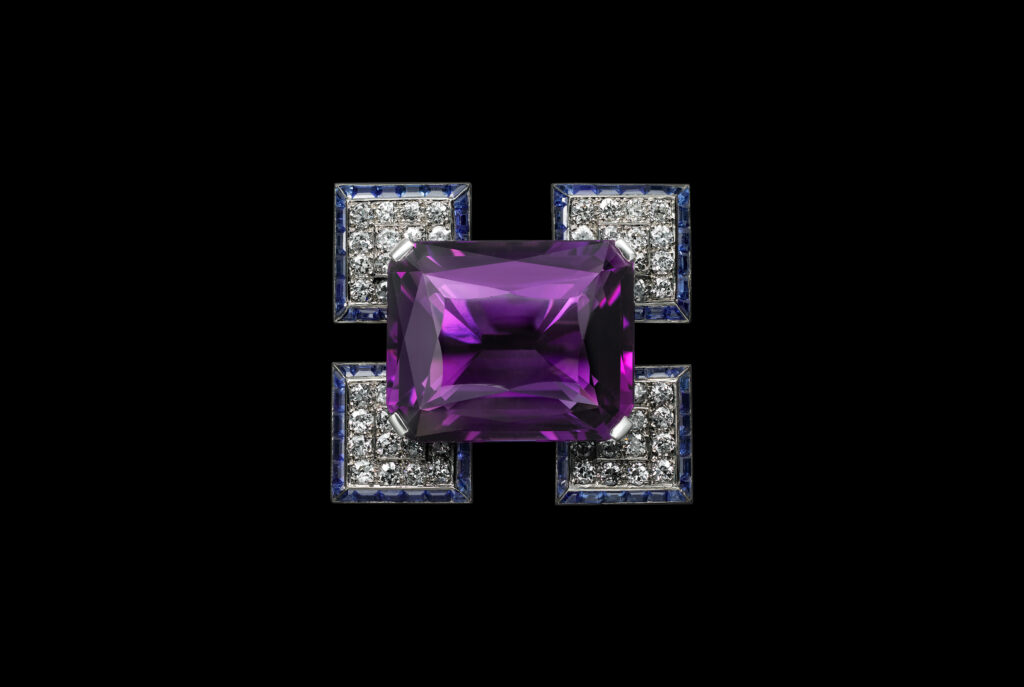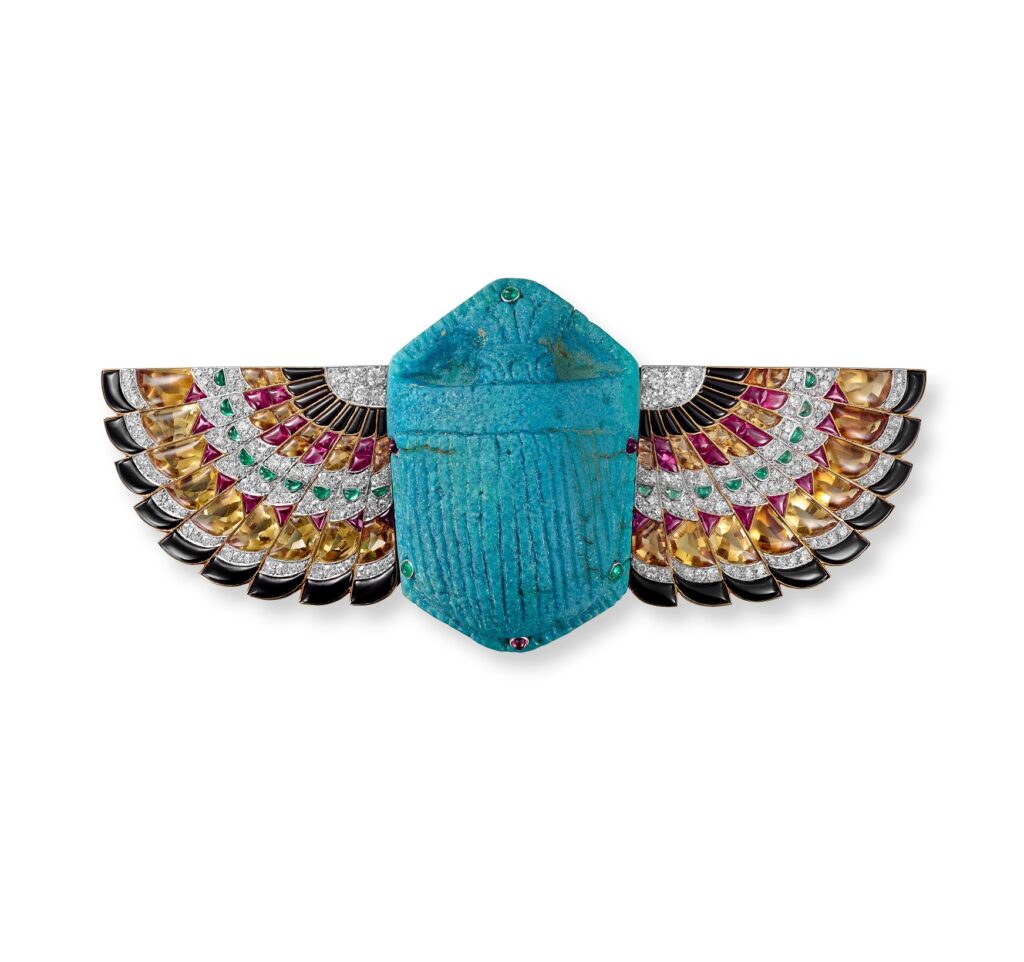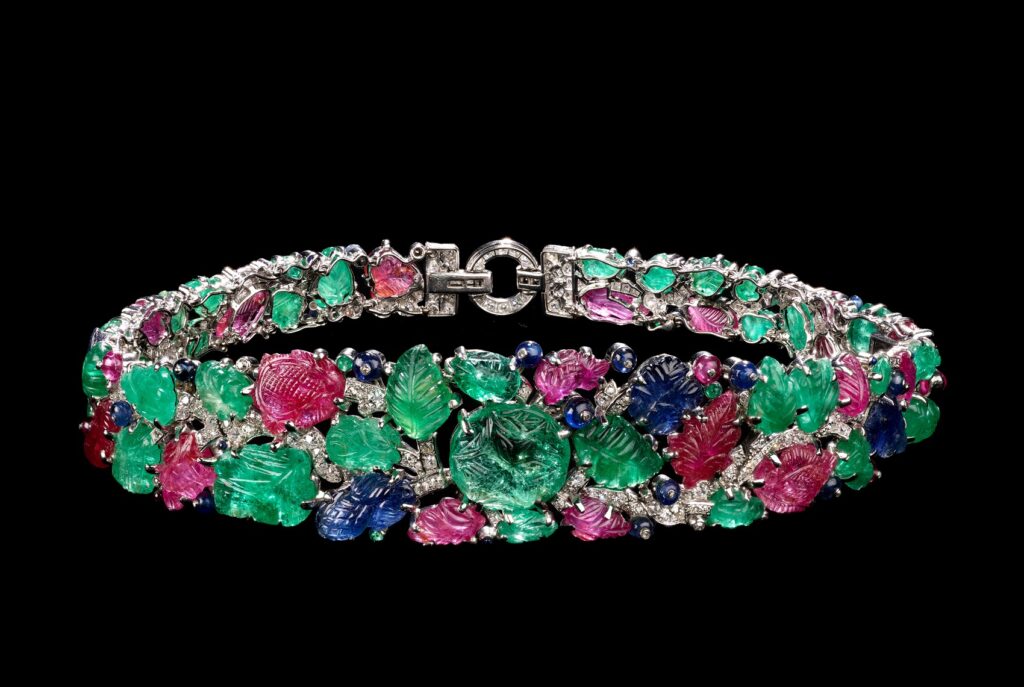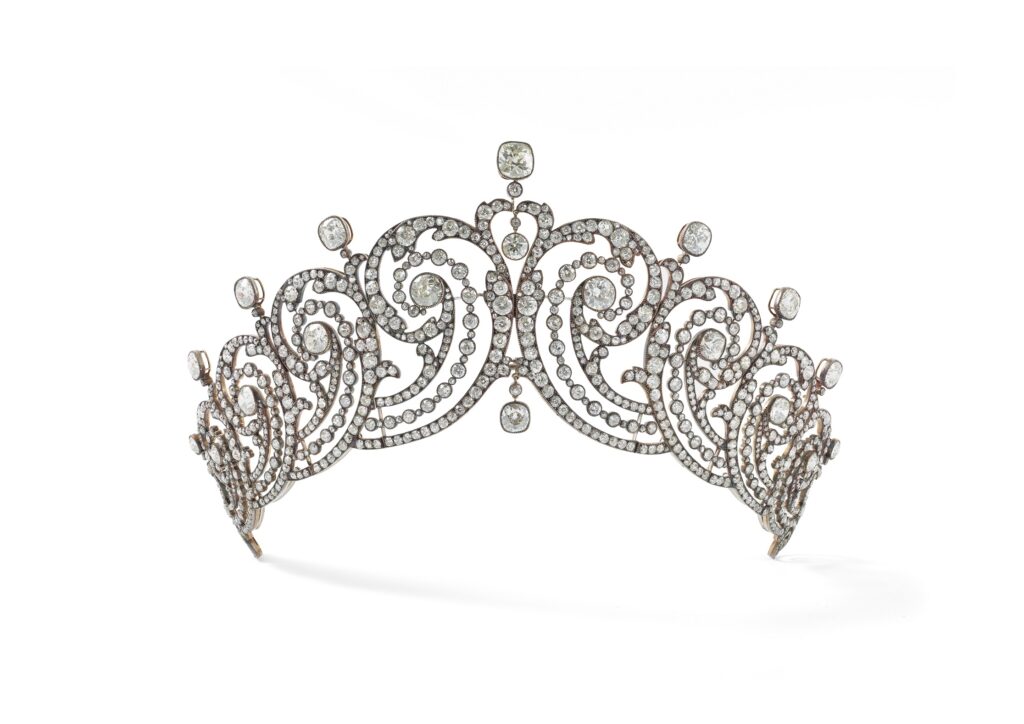One of the most storied of the heritage jewelry houses, Cartier is being recognized once again for its superb jewelry at London’s Victoria & Albert Museum (V&A). Simply titled “Cartier”. It is the first major exhibition in the United Kingdom of Cartier jewelry and watches in almost 30 years. The exhibition, which runs through November 16, 2025, explores how Cartier became “an unparalleled force in the jewelry and watch world.”
From Paris to the World

“Cartier is one of the most famous jewelry houses in the world,” said exhibition curators Helen Molesworth and Rachel Garrahan. “This exhibition will explore how Louis, Pierre and Jacques Cartier, together with their father Alfred, adopted a strategy of original design, exceptional craftsmanship and international expansion that transformed the Parisian family jeweler into a household name.”
The exhibition is jam packed with more than 350 pieces that trace the evolution of the firm’s legacy of art, design and craftsmanship since the turn of the 20th century. “I wanted our collaboration to be a dreamscape where art and science converge, with Cartier’s pieces suspended in light, time and sound, allowing history to breathe and the future to linger,” explained Asif Khan MBE, exhibition designer, who continues a tradition of landmark collaborations where artists have shaped Cartier’s scenography.
It was the early years of the 20th century that set the stage for Cartier to become a global jewelry powerhouse. In 1847 Louis-François Cartier founded his namesake business and by the beginning of the 1900s, his three grandsons, Louis, Pierre and Jacques, were unified by their desire to move the family business to the global stage at the highest echelons of society, with each one landing in a major city to further the firm’s growth. Louis was in Paris, Pierre opened up a store in New York City and Jacques took over London, where King Edward VII proclaimed that Cartier was the “jeweler of Kings and King of jewelers.”
Divided into three main sections, the exhibition explores Cartier’s creativity, the emergence of its signature style, the legacy of its technical ingenuity and craftsmanship as well as its sophisticated approach to creating its image, while maintaining its legacy and relevance in an ever changing world.
Cartier’s Creativity

The exhibition starts by introducing us to Louis, Pierre and Jacques Cartier. The first section highlights Cartier’s creativity, sources of inspiration, the emergence of its style and relationships with key clients. This part of the exhibition shows how relationships with some of its most important clients resulted in collaborations that produced some of the firm’s most magnificent creations. This section of the exhibition also shows visitors how exploring the history of decorative arts, not only in Europe, but globally, translated into Cartier’s creations with imagination, discernment and authenticity. This section delves into how the firm developed its signature style that combined modernity and innovation with elegance and refinement.
Cartier Workshops

Section two of the exhibition showcases the Cartier workshops, its exceptional access to important gemstones and its technical innovation. Each location had its own workshop where skilled artisans created jewels to the firm’s exacting standards. It’s here where visitors will see how the Maison’s iconic panther is made, using many jewelry making techniques that have been around for centuries.
The use of outstanding materials is crucial to the high quality production of Cartier jewelry. Jacques Cartier traveled to India, Sri Lanka and the Middle East, sourcing important gems and developing a network of dealers as well as a following of elite clients. This is where you’ll see some of the finest gems in the world on display including a collection of Tutti Frutti jewelry that features the Mountbatten bandeau, made in 1928 by Cartier and purchased by Lady Mountbatten.
Branding

The third and final section of the Cartier exhibition is a look at how Cartier shaped its image to become one of the most widely recognized businesses in the world. The firm used public exhibitions and advertising to build its image while also loaning jewelry to society events and fashion magazines. As the role of royals and nobles began to shrink in the 20th century, actors and musicians became the style icons of the moment and Cartier was right there supplying them with glamorous jewelry.
The exhibition concludes with a dazzling display of tiaras, which are not only the ultimate symbol of wealth and status, but they also showcase the jeweler’s creativity and technical skill. While there are many highlights in this section, one that stands out is the Garland Style Scroll tiara from 1902 that was worn at Queen Elizabeth II’s coronation and in 2016 by Rihanna on the cover of W Magazine.
“With its world-class jewelry collection, the V&A is the perfect stage to celebrate the pioneering achievements of Cartier and its transformative ability to remain at the center of culture and creativity for more than a century,” conclude curators Helen Molesworth and Rachel Garrahan. “We are excited to be able to share with visitors some of Cartier’s most famous creations as well as revealing previously unseen objects and archive material that further enriches our understanding of a jewelry house that continues to influence the way we adorn ourselves today.”
Top of Page: Patiala Necklace, Cartier Paris, special order, 1928 (restored 1999–2002). Commissioned by Bhupinder Singh, Maharajah of Patiala. Diamonds, yellow and white zirconia, topaz, synthetic rubies, smoky quartz, citrine set in platinum. Vincent Wulveryck, Collection Cartier © Cartier
Authored by Amber Michelle
